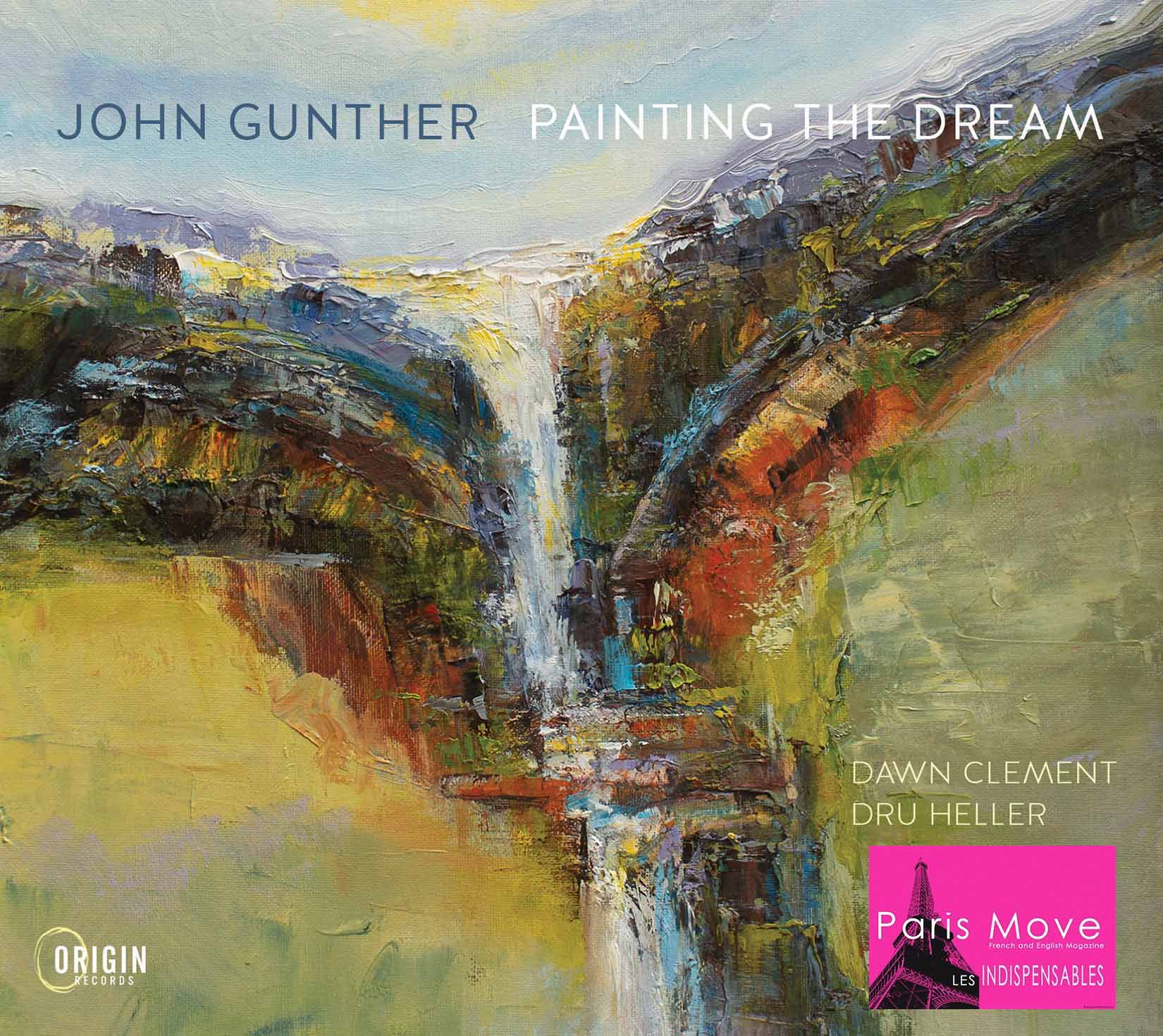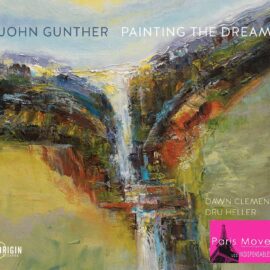| Jazz |

John Gunther: Painting the Dream — When Sound Becomes Vision
John Gunther paints with sound. Each note on his latest album, Painting the Dream, feels like a brushstroke drawn from a vivid inner landscape. Listening to it, one senses not just a musician shaping melodies, but a composer sculpting space, color, and emotion. The Denver-based saxophonist, clarinetist, and educator has long been known for his range as a multi-instrumentalist and improviser. Yet here, more than ever, he asserts his identity as a composer at heart, an architect of sonic images whose art lies as much in conception as in execution.
For Gunther, composition resembles the solitary labor of the writer. It requires patience, precision, and above all, a personal vision of how form and emotion intertwine. *Painting the Dream* embodies that ethos. Its title is more than metaphor, it’s almost literal. The album unfolds like a sequence of canvases, each rendered in sound rather than pigment. The music evokes not surrealism but a form of hyper-realism, where sharps, flats, and rhythmic accents serve as colors and textures. Warm tones, cool gradients, and subtle contrasts emerge not from oil and brush but from timbre, harmony, and phrasing. Across the album’s thirteen tracks, Gunther constructs an entire gallery of impressions, leading the listener through shifting light and shadow until the final piece reveals the full tableau.
The Art Behind the Sound
There’s an echo here of Mussorgsky’s Pictures at an Exhibition, though the resemblance lies more in spirit than in structure. Like Mussorgsky, Gunther seeks to fuse the visual and the musical, to turn subjective experience into form. Where Mussorgsky offered direct narrative intent, Gunther offers reflection,music that invites contemplation rather than dictates emotion. His approach demands a listener willing to engage intellectually and emotionally, to absorb each layer of harmony and silence.
In that sense, Gunther aligns with Wayne Shorter, especially with Shorter’s late masterpiece Emanon. Both artists elevate the act of composition into a kind of metaphysical inquiry. Their music aspires not merely to describe the world, but to invent one. Gunther’s melodies float between order and abstraction, between the structured and the spontaneous, projecting a universality that feels timeless. This, perhaps, is what marks the great composers of the twentieth and twenty-first centuries: the ability to transform complexity into clarity, and intellect into beauty. It’s a quality shared by artists like Anthony Branker, Dave Liebman, and others who see jazz composition as a philosophical act, a way of thinking through sound.
Two Kinds of Composers
To grasp the depth of Gunther’s craft, it helps to recognize a distinction that only musicians truly appreciate. There are composers who are musicians, their instruments serve primarily as tools, and then there are musician-composers, for whom the instrument is inseparable from the act of creation. Miles Davis was one such artist; his trumpet wasn’t just a means of expression but an extension of his consciousness. Gunther belongs to that lineage. His horn doesn’t simply deliver the notes, it shapes the very thought behind them. His compositions flow from an awareness of space, motion, and resonance that is tactile as much as it is cerebral.
This duality, between intellect and instinct, between architecture and improvisation, permeates Painting the Dream. Gunther’s tone, at once lyrical and exploratory, blurs the line between composition and improvisation, between the written and the felt. His saxophone can whisper like graphite on paper or surge like a wave of color across canvas. Every motif seems to imply a gesture, a movement of the hand or brush.
A Collective Vision
It’s no coincidence that Gunther surrounded himself with collaborators who share that same painterly intuition. Pianist Dawn Clement, herself a gifted composer, illuminates the music with harmonic light and poetic restraint. Her playing reveals a deep understanding of Gunther’s conceptual framework, one built on empathy and space. At times, her voice becomes another instrument, humanizing the ensemble’s textures with a delicate clarity that feels both intimate and transcendent.
Drummer Dru Heller completes the trio with remarkable sensitivity. His rhythms are never merely rhythmic, they’re sculptural, shaping the music’s architecture with a fine balance of control and freedom. Listening closely, one realizes how deeply interactive this trio is. It’s not the sum of three instruments but the fusion of three imaginations. Despite its modest instrumentation, Painting the Dream sounds vast, almost orchestral in scope, full of quiet grandeur and subtle interplay.
Understanding the album’s genesis adds another layer of meaning. Gunther conceived it partly as a tribute to his friend and collaborator, trumpeter Ron Miles, an artist whose lyrical minimalism left a lasting imprint on the Denver jazz scene and beyond. The spirit of Miles hovers over the record, not as elegy but as inspiration, reminding us that beauty often resides in restraint.
Gunther also draws upon another, more personal muse: his mother, Judy Gunther, whose paintings grace the album’s cover. Her refined sense of color and balance shaped his artistic outlook from childhood. In many ways, Painting the Dream feels like an intergenerational dialogue, between sound and image, between memory and creation. Her visual language of hues and light resonates throughout his harmonic palette, giving the album its title and its essence.
The Denver Connection
Beyond his work as a recording artist, Gunther stands as a central figure in Colorado’s vibrant jazz ecosystem. As a professor at the University of Colorado Boulder, he has guided a generation of improvisers toward deeper forms of expression, encouraging them to treat composition not as a separate craft but as an extension of improvisation itself. His presence in Denver’s creative community bridges tradition and experimentation, connecting the city’s storied jazz legacy with the exploratory spirit of the present.
In this light, Painting the Dream isn’t just an album, it’s a statement of artistic philosophy. It embodies Gunther’s belief that jazz remains a living art form, capable of absorbing influence from painting, literature, and beyond, without ever losing its improvisational core. It’s music that invites us to listen not only with our ears, but with our eyes and imagination.
Between Beauty and Experiment
Balancing a quest for beauty with the curiosity of a painter, Painting the Dream occupies a rare space in contemporary jazz. It’s both accessible and challenging, lyrical and cerebral, intimate and cinematic. It speaks to listeners who crave meaning as much as sound, and who understand that true artistry lies in the dialogue between the known and the unknown.
In the end, Gunther’s dream is not one to escape into, but one to share. His music invites us to see, as much as to hear, the boundless possibilities of composition in the twenty-first century. Like the great artists who inspired him, he paints not only what he sees, but what he feels. And in doing so, he reminds us that music, at its most profound, is nothing less than the art of turning dreams into color.
Thierry De Clemensat
Member at Jazz Journalists Association
USA correspondent for Paris-Move and ABS magazine
Editor in chief – Bayou Blue Radio, Bayou Blue News
PARIS-MOVE, October 28th 2025
Follow PARIS-MOVE on X
::::::::::::::::::::::::
Musicians :
John Gunther – soprano & tenor saxophones, flute, bass clarinet, electronics
Dawn Clement – piano, Fender Rhodes, voice, electronics
Dru Heller – drums & cymbals
Track Listing :
1 In Praise of Softness 4:23
2 Mother Juggler 4:47
3 In Motian 3:07
4 Two Steps Forward 5:14
5 Ron Song 5:03
6 Blues for Dru 6:47
7 Painting the Dream 5:44
8 Us 5:57
9 Turn About 6:32
10 Play Date 4:09
11 Elliptical Motion 5:32
12 When Time Stops 4:06
13 Bubbles 5:02
Music by John Gunther (John Gunther Music, BMI) except (2) by Ron Miles (Distance for Safety Music, BMI)
Produced by John Gunther
Recorded, mixed & mastered by Colin Bricker at Mighty Fine Productions, Denver, CO
Recorded on December 12, 13, 2024
Band photo by Seth Beamer Productions
Paintings by Judy Gunther
Cover design & layout by John Bishop

